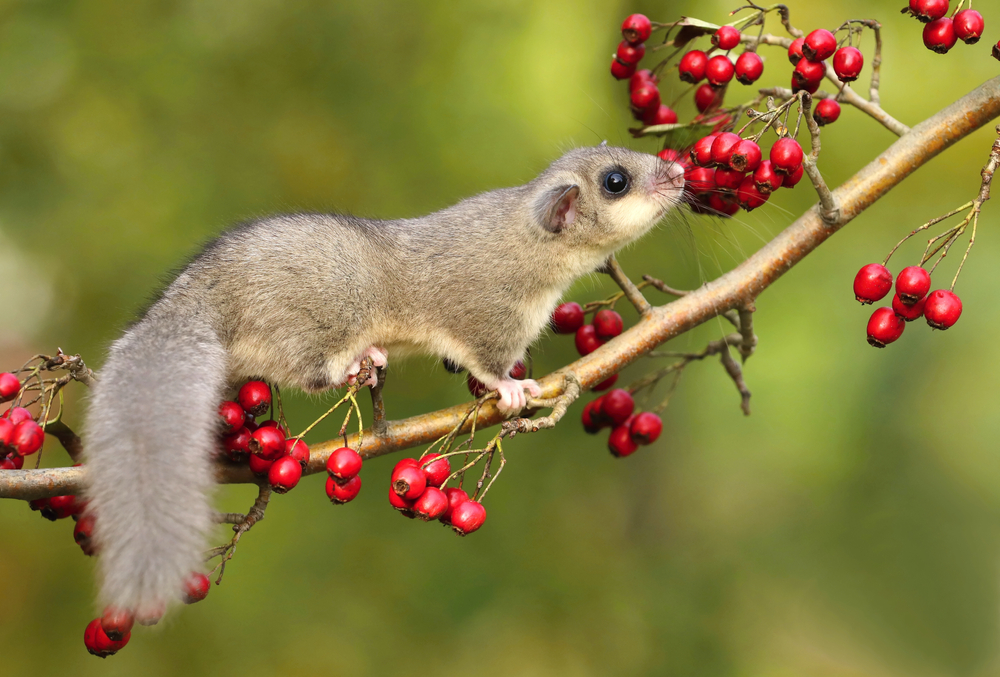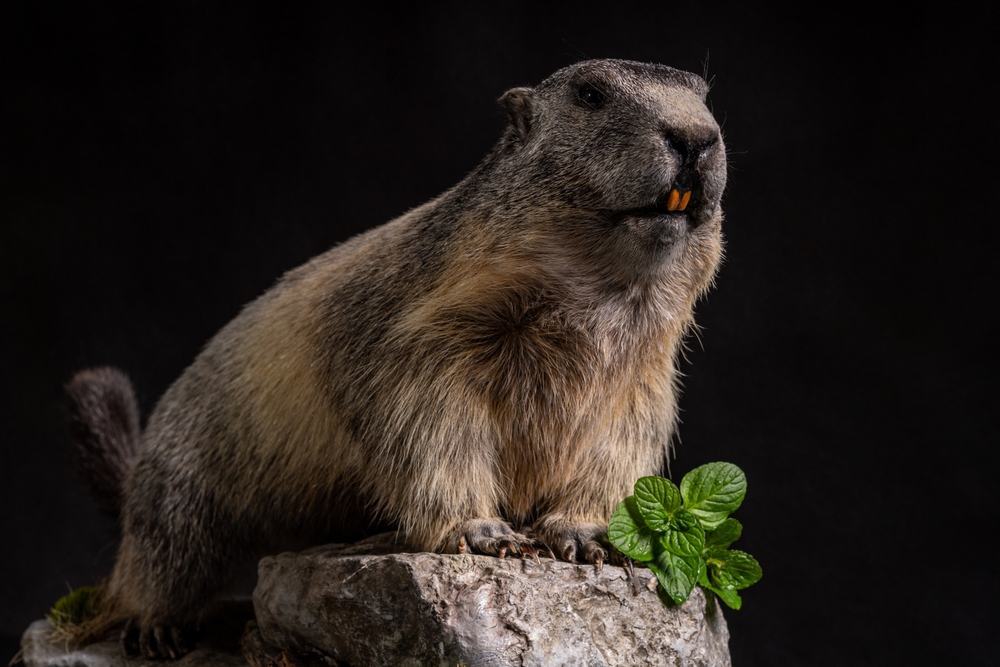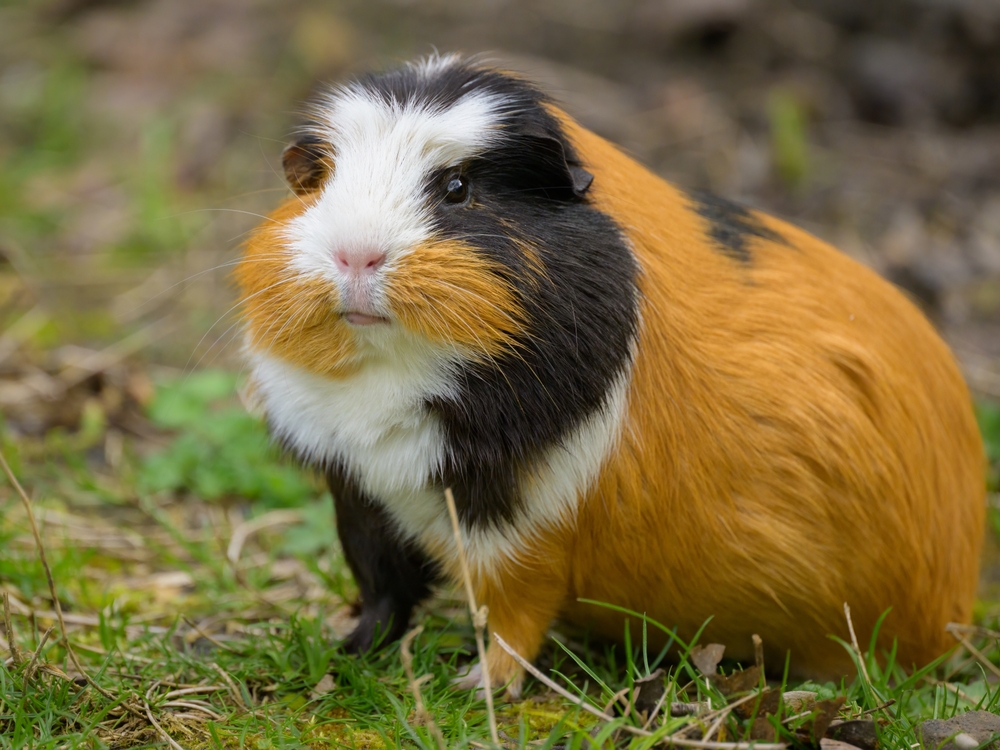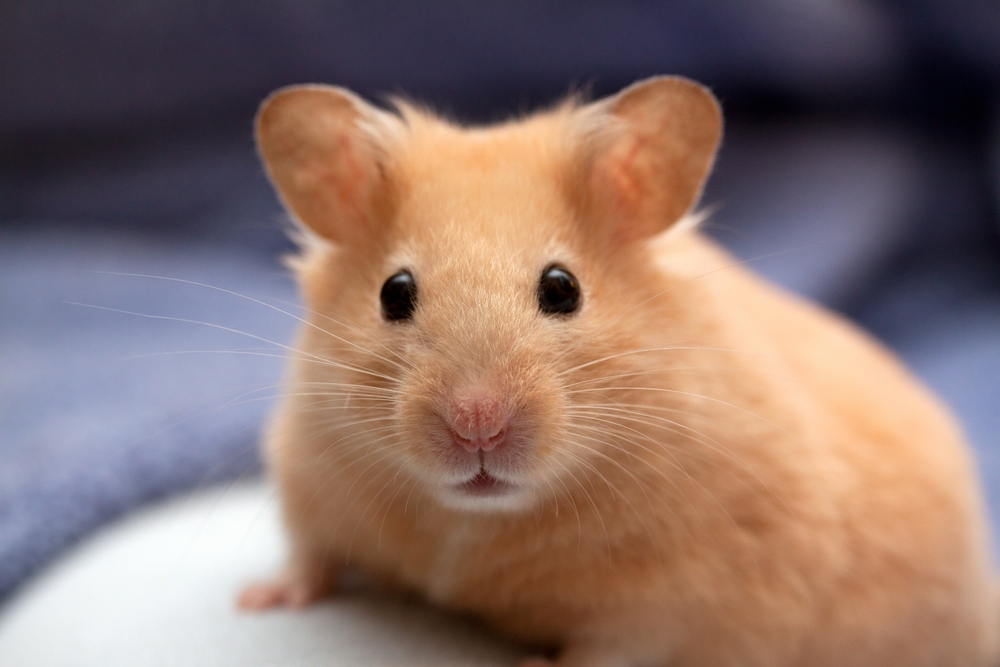The closest relative is the Merriam’s Kangaroo Rat (Dipodomys merriami), which shares similar size, bipedal hopping locomotion, and extreme water conservation abilities, but has a slightly different range and fur coloration.
About
The Desert Kangaroo Rat is a nocturnal rodent adapted to the arid deserts of the southwestern United States and northwestern Mexico. Belonging to the family Heteromyidae, it is one of the largest kangaroo rat species and is highly specialized for life in extreme heat and drought.
Adult Desert Kangaroo Rats measure 32–38 cm (12.5–15 in) in total length, including their long tail, and weigh between 100–160 g (3.5–5.6 oz). They are named for their powerful hind legs, which allow them to hop in a kangaroo-like fashion, covering large distances in a single bound. Their fur is soft and sandy-colored, blending well with desert soils, while their tail is tufted at the tip to aid in balance.
These rodents are remarkably water-efficient, obtaining all the moisture they need from their diet of seeds and plant material. They have specialized kidneys that conserve water by producing highly concentrated urine, allowing them to survive without drinking free water.
Desert Kangaroo Rats live in burrow systems dug into sandy or gravelly soils, which provide insulation from extreme daytime temperatures and protection from predators such as snakes, owls, and foxes. They are solitary and highly territorial, marking their home ranges with scent.
Their foraging activity peaks at night, when they search for seeds, caching them in shallow pits for later use. This behavior plays an important role in desert ecosystems by helping disperse and germinate native plants.
The Desert Kangaroo Rat’s scientific name is Dipodomys deserti, and it belongs to the family Heteromyidae.
Physical Characteristics
Fur and Coloration:
The Desert Kangaroo Rat has short, dense fur that is typically sandy brown to pale gray on the upper body, blending well with desert terrain. The underparts, including the belly and inner legs, are white or cream. A distinct white stripe may run along the sides of the hind legs.
Head and Eyes:
The head is relatively large compared to body size, with prominent, dark eyes adapted for excellent night vision. The small, rounded ears are covered with fine hair, which helps reduce water loss and protect against sand.
Body:
This species has a compact body designed for efficient water conservation and heat dissipation. The hindquarters are especially well-developed, enabling powerful jumps.
Legs and Feet:
-
Hind Legs: Long, strong, and adapted for bipedal hopping, similar to a miniature kangaroo. The feet are fur-covered on the soles, which helps in traveling over hot sand and provides extra traction.
-
Forelegs: Short and used mainly for digging and handling food.
Tail:
The tail is long—often equal to or longer than the body—and covered in fur with a distinctive tuft at the tip. It serves as a counterbalance during jumping and as a stabilizer during sharp turns.
Size:
-
Body Length: 12–14 cm (4.7–5.5 in)
-
Tail Length: 14–16 cm (5.5–6.3 in)
-
Weight: 70–170 g (2.5–6 oz)
Sexual Dimorphism:
Minimal; males and females are similar in size and coloration, though males may be slightly heavier on average.
The Desert Kangaroo Rat’s long hind legs, water-efficient physiology, and sandy-colored camouflage make it perfectly adapted to life in arid desert environments.
Reproduction
Mating Behavior:
Desert Kangaroo Rats are solitary for most of the year, coming together only to mate. Males locate receptive females through scent and vocalizations, often engaging in short chases before copulation. Courtship is brief, as prolonged exposure increases predation risk.
Breeding Season:
Breeding typically occurs from late winter to early autumn (February to September), with peak activity in spring and early summer when food availability is higher after seasonal rains. In areas with mild conditions, breeding may extend year-round.
Gestation and Litter Size:
-
Gestation Period: Approximately 30 days.
-
Litter Size: Commonly 2 to 4 young, though litters of up to 6 are possible in favorable conditions.
-
Females may produce multiple litters per year if food is abundant.
Nesting:
Females give birth in underground burrows lined with plant material. These burrows are deep enough to maintain stable temperatures and humidity, protecting the young from desert extremes.
Young:
-
Appearance at Birth: Pink, blind, hairless, and entirely dependent on the mother.
-
Weaning Age: Around 2–3 weeks.
-
Independence: Juveniles disperse from the natal burrow shortly after weaning to establish their own territories.
Maturity:
Both males and females reach sexual maturity at about 2 to 3 months of age, allowing populations to recover quickly after favorable seasons.
The Desert Kangaroo Rat’s short gestation, rapid development, and multiple breeding cycles help it thrive in a challenging, unpredictable desert environment.
Lifespan
Lifespan in the Wild:
In their natural desert habitat, Desert Kangaroo Rats typically live 2 to 5 years. Survival rates are heavily influenced by predation, food availability, and extreme environmental conditions.
Lifespan in Captivity:
With protection from predators, consistent food supply, and veterinary care, they can live significantly longer.
-
Average Maximum Lifespan: 5 to 8 years in managed care.
Threats to Longevity:
-
Predation: Owls, hawks, snakes, foxes, and coyotes are major natural predators.
-
Harsh Climate: Extreme heat, drought, and sudden temperature shifts can reduce survival rates, especially for juveniles.
-
Food Scarcity: Prolonged dry periods reduce seed availability, limiting energy reserves.
-
Habitat Disturbance: Human activity such as off-road driving, agriculture, and grazing can destroy burrows and reduce habitat quality.
Adaptations for Longevity:
-
Water Independence: They obtain nearly all required water from seeds, eliminating the need to drink.
-
Nocturnal Lifestyle: Being active at night reduces exposure to predators and extreme heat.
-
Efficient Burrow Systems: Deep burrows provide stable temperatures, reduce water loss, and protect against predators.
The Desert Kangaroo Rat’s water efficiency, nocturnal habits, and specialized burrow use help it survive for several years in one of the harshest environments on Earth.
Eating Habits
Diet:
Desert Kangaroo Rats are granivorous, meaning their diet is primarily composed of seeds.
-
Primary Foods: Seeds from desert grasses, shrubs, and annual plants such as creosote bush, mesquite, and saltbush.
-
Occasional Foods: Green vegetation and insects, particularly after seasonal rains.
Water Acquisition:
-
Obtain nearly all their water from the oxidation of fats in seeds, eliminating the need to drink.
-
Extremely efficient kidneys allow them to excrete waste with minimal water loss.
Feeding Behavior:
-
Nocturnal feeders, emerging at night to collect seeds to avoid heat and predation.
-
Use cheek pouches to transport seeds back to burrows for storage.
-
Maintain multiple “pantry” chambers underground to sustain themselves during food-scarce periods.
Foraging Strategy:
-
Prefer open, sparsely vegetated areas where they can detect predators more easily.
-
Make short foraging trips from burrow entrances, hopping quickly between feeding spots.
-
Scatter-hoard seeds to reduce loss from theft by other rodents.
Adaptations for Feeding:
-
Strong hind legs enable rapid, bounding movement to evade predators while foraging.
-
Fur-covered soles provide traction and insulation from hot sand.
-
Acute hearing helps detect predators while head-down in feeding posture.
The Desert Kangaroo Rat’s seed-based diet, water-independent physiology, and efficient food storage habits allow it to survive in arid habitats where other mammals could not.
Uniqueness
Water-Free Survival:
The Desert Kangaroo Rat is capable of living its entire life without drinking water, relying solely on metabolic water produced from dry seeds.
Specialized Kidneys:
Possesses some of the most efficient kidneys in the animal kingdom, producing extremely concentrated urine to conserve water.
Bipedal Locomotion:
Moves using long, powerful hind legs for hopping—similar to a miniature kangaroo—which allows quick travel across open desert while evading predators.
Cheek Pouch Seed Storage:
Has fur-lined external cheek pouches used to collect and transport seeds to underground burrow caches for later consumption.
Extreme Predator Evasion:
Capable of high-speed, erratic hopping and sharp turns, sometimes leaping over a meter in a single bound, to escape snakes, owls, and other predators.
Burrow Climate Control:
Creates complex burrow systems with storage chambers and nesting areas that maintain cooler, more humid conditions than the surface environment.
The Desert Kangaroo Rat’s waterless lifestyle, efficient kidneys, and kangaroo-like movement make it one of the most uniquely adapted mammals of North America’s desert ecosystems.
Be the First to Share Photos of This Species.
FAQ’s
1. What is the closest species to the Desert Kangaroo Rat?
2. How does the Desert Kangaroo Rat compare to other rodents?
The desert kangaroo rat varies in a few ways:
-
Water Use: Unlike most rodents, it can survive without drinking any water.
-
Locomotion: Moves on two legs like a kangaroo, rather than scurrying on all fours.
-
Kidney Efficiency: Has some of the most water-efficient kidneys in the mammal world.
-
Diet: Strictly granivorous, relying almost entirely on dry seeds.
-
Burrow Systems: Creates complex underground storage and living chambers to survive in extreme heat.
3. What national parks provide the best chances to see a Desert Kangaroo Rat?
Desert Kangaroo Rats inhabit arid regions of the southwestern United States and northern Mexico. The best chances to see them are at night in desert habitats within:
-
Joshua Tree National Park (California, USA)
-
Anza-Borrego Desert State Park (California, USA)
-
Saguaro National Park (Arizona, USA)
-
Organ Pipe Cactus National Monument (Arizona, USA)
-
Big Bend National Park (Texas, USA)
Nighttime spotlighting along quiet desert roads or trails in these areas often yields sightings.








































































